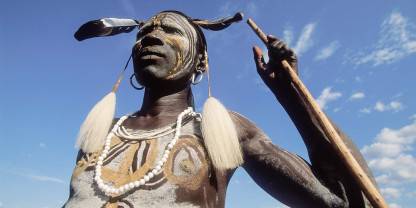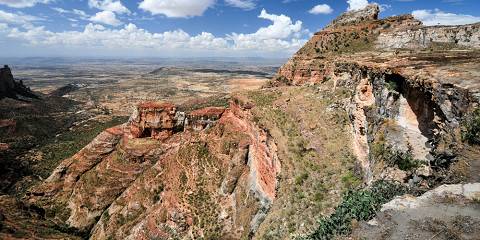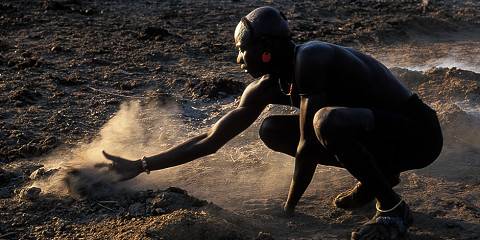Mago National Park is a large tract of typical East African and is home to most well-known safari animals. Due to poaching problems, you’re not likely to see a lot of wildlife though. More alluring is visiting a settlement of Mursi people, most known for their ornate lip-plates. Meeting these pastoralists, who are living a lifestyle unchanged for hundreds of years, is an eye-opening experience.

-
Best Time To Go
- June to February (Little rainfall)
-
High Season
- October to January (It might be busier)
-
Size
- 2,162km² / 835mi²
-
Altitude
-
392-1,611m /1,286-5,285ft
 View Photos
View Photos
 View Photos
+12
Photos
View Photos
+12
Photos
Pros & Cons
- A chance to meet pastoralist Mursi people
- Large wilderness area
- Low numbers of animals
- No facilities in the park
Wildlife
Although the park has an impressive mammal checklist, you’re unlikely to see any of the larger mammals such as elephant, buffalo and reticulated giraffe. Olive baboon and Guenther’s dik-dik are common. Other wildlife you might spot includes defassa waterbuck, gerenuk, bushbuck, Jackson’s hartebeest, lesser kudu and patas monkey. Look out for movement high up in the canopy. Seeing a troop of beautiful black-and-white guereza monkey is always a treat.
Scenery
The vast ecosystem is characterized by and open . The park’s lifeline is the meandering Mago River and its . The Mago River meets the Omo River via a large swamp area and all is overlooked by the majestic Mago Mountains. Traditional people live in small settlements along the two big rivers.
Weather & Climate
The weather and climate of Mago National Park is comparable to that of Ethiopia in general. More info:
Best Time To Visit Mago NP
Mago NP can be visited throughout the year. It isn’t primarily a wildlife destination and the Mursi people are always there. The best chance for wildlife viewing is perhaps in the driest months from December to February. April and May are the wettest months, and the bad roads deteriorate quickly after rain.
How To Get to Mago NP
Mago NP is usually visited as a day trip from Jinka. The distance is only 40km/25mi but, depending on the condition of the road, the drive can take up to 2 hours*. There are regular flights to Jinka, the gateway of the Omo Valley, and you can hire a 4x4 there. Alternatively, you can hire a 4x4 in Addis Ababa and start a road trip to southern Ethiopia from there. There are many tours covering this part of the country as well.
*Driving times are only a rough indication. You should always consider the possibility of significant delays.
Health & Safety
Please read our vaccinations and malaria page for Ethiopia, and our general wildlife viewing safety precautions page for more info:




